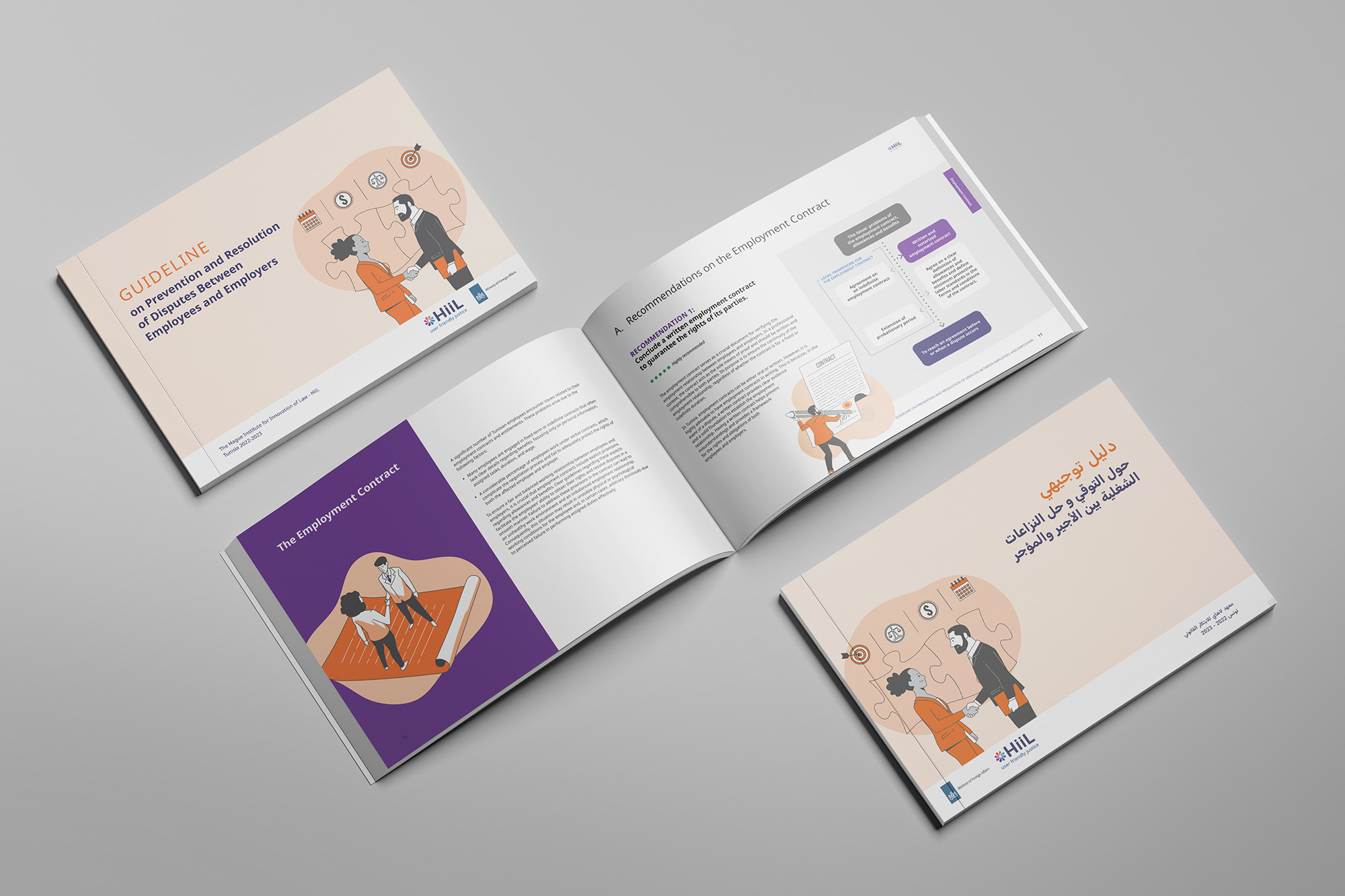Tunisia Employment Justice Catalogue
Treatment Guidelines provide recommendations on interventions that have proven to work. In Tunisia, more than 250,000 people find themselves in work-related disputes each year. This Guideline examines employment issues in the country and how to resolve them—turning knowledge into action.
National organisations and governments have developed a range of clinical guidelines containing recommendations that support medical professionals in their daily work. This approach is applied and modified for the justice sector.
Justice guidelines are sets of recommended interventions which practitioners can apply to prevent and/or resolve people’s justice issues. The main objective of this guideline is to strengthen the capacity of practitioners and justice providers to resolve labour disputes.
The Treatment Guidelines on the Prevention and Resolution of Disputes Between Employees and Employer is designed for employees, employers and stakeholders interested in the subject of individual employment relations in Tunisia. It applies to both the formal and informal justice systems. This guideline also combines the experiences of practitioners across Tunisia. In doing so, it is based on evidence and features tested interventions recommended from internationally conducted studies.
This Treatment Guideline is divided into three main sections covering labour-related disputes:
- Employment contracts;
- Rights and duties of the parties to the employment contract;
- Strengthening relationships between employees and employers.
HiiL worked closely with eight high-level experts and three highly skilled researchers to develop the recommendations. Over the course of eight work sessions, researchers met with the Committee of Experts and shared local and international legal provisions related to employment disputes.
In the second phase, members of the Committee of Experts shared their experiences about the matter by transposing recommendations in a Tunisian and local context.
In the third phase, best practices were collected from local service providers and based on their own experience. We then detailed effective interventions by the experts and tested these interventions against each other using the PICO / GRADE method (this is further explained in the Methodology chapter).


